
Freeze drying technology was invented in the early 20th century, and after World War II, it began to be applied in fields such as food, medicine, aerospace, and gradually industrialized and promoted. Freeze dried food, also known as FD (Freeze Dried) food, has the advantage of maintaining its freshness and nutritional content, and can be stored at room temperature for more than 5 years without preservatives. Due to the removal of most of the moisture in its finished product, it has the advantages of being lightweight, easy to carry and transport, and freeze-dried food has also begun to enter people's daily lives, becoming a leisure and convenient healthy food
In developed countries such as Japan, the United States, and Europe, freeze-dried food has developed to the level of industrialization and automation. In these countries, the proportion of nutritious and high-quality freeze-dried food in the simple and convenient structure of convenient food expenses is generally over 50%, and its popularity in daily life has also reached a considerable height. Data shows that the markets for freeze-dried food in the United States and Japan are relatively mature, requiring 6 million tons and 2 million tons of freeze-dried food respectively annually.
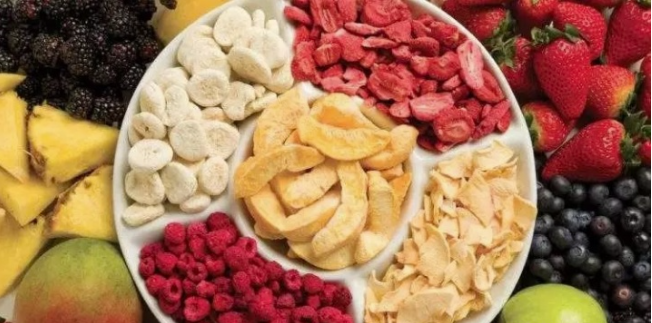
At present, freeze-dried foods in China are still relatively common, such as freeze-dried fruit slices, freeze-dried vegetables, freeze-dried beef, and soup products. Compared to traditional baked, fried, puffed, and honey based foods, freeze-dried foods maintain the natural taste of the food, the color, aroma, taste, and shape of the ingredients, without any additives. They have good rehydration properties and can be eaten immediately or soaked in water. They are time-saving, labor-saving, lightweight, and portable, attracting the attention of many consumers.
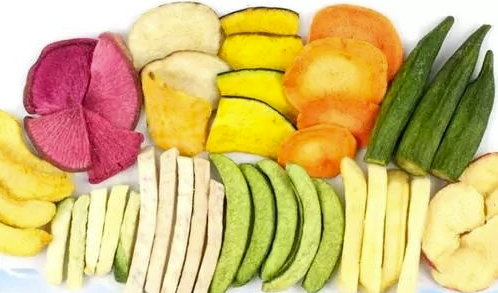
Principles of Freeze Drying Technology
Freeze drying technology refers to vacuum freeze drying technology, which is different from frying or baking and spray drying when making powder. Freeze drying is to sublimate frozen food in a vacuum environment and dehydrate the food. Simply put, freeze-drying is actually a sublimation process of frozen products. When frozen liquid begins to transform into gas, sublimation occurs.
The entire freeze-drying process mainly includes three stages: pre freezing, quick freezing, and vacuum drying.
The basic principle of freeze-drying is based on the three states of water, which have three phases: solid, liquid, and gas. The three phases can be converted or coexist with each other, and the three-phase changes are mainly based on the pressure and temperature of water.
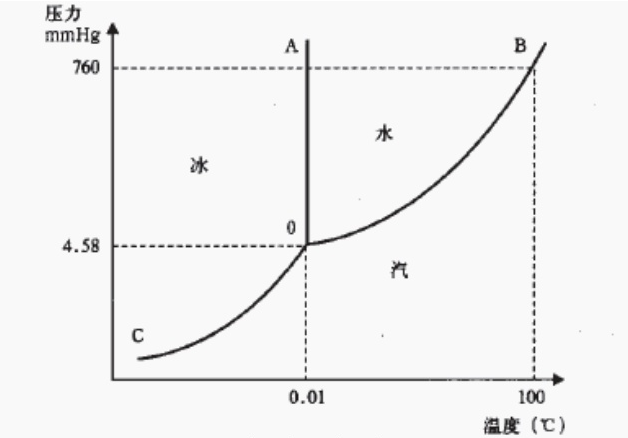
Food freeze-drying is the process of rapidly freezing fresh foods such as vegetables, meat, fruits, etc. in advance, and sublimating the moisture in the food from a solid state to a gaseous state under vacuum. Then, it is analyzed and dried to remove some bound water, achieving low-temperature dehydration and drying.
1. Pre freezing and quick freezing
Freeze dried food must be pre frozen below its crystallization temperature, that is, the substances (solutes) that make up the food must be frozen first. The reason for adopting quick freezing method is that the faster the freezing speed, the smaller the ice crystals in the food, and the less mechanical damage to the cells.
2. Vacuum drying
The drying stage of freeze-drying is generally divided into two stages: first drying and second drying, also known as sublimation drying and analytical drying.
(1) One drying session
After pre freezing, ice must be removed from food through sublimation, which requires careful control of two parameters: temperature and pressure. Food absorbs heat under vacuum conditions, and ice crystals will sublime into water vapor and overflow from the surface of the food. The sublimation rate depends on the difference between the vapor pressure of the food and the vapor pressure of the ice collector. Molecules will move from high-pressure samples to low-pressure samples, and since vapor pressure is temperature dependent, the food temperature must also be higher than the ice collector temperature.
(2) Secondary drying
After one drying, all the ice in the food sublimates, but there are still some liquids present in the food, so it is necessary to perform a second drying to thoroughly remove excess moisture. This process is also called isothermal desorption, where excess water is desorbed through high temperature.
Characteristics of freeze-dried food
1. High nutrition
Vacuum freeze-drying processing is a drying process carried out under extremely low temperature and high vacuum conditions. During processing, the ingredients are basically in an anaerobic and completely dark environment, with minimal thermal denaturation, effectively maintaining the color, aroma, taste, and shape of fresh ingredients, and maximizing the preservation of various nutrients such as vitamins, carbohydrates, proteins, chlorophyll, biological enzymes, amino acids, and flavor substances in the ingredients. Research data shows that freeze-dried foods stored for 1-2 years can completely replace fresh food in terms of nutrition.

2. Palatability
Due to the fact that water in the food will precipitate in its original location during the freeze-drying process, it avoids the undesirable phenomena of nutrient loss and surface hardening caused by the migration of internal moisture to the surface of the food in general drying methods. It has ideal solubility and rapid rehydration properties.
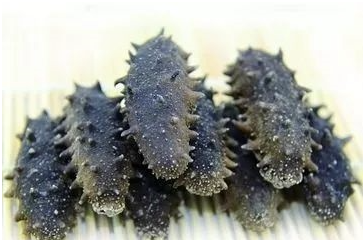
3. High rehydration ability
During the freeze-drying process, solid ice crystals sublime into water vapor, leaving gaps in the food. Therefore, vacuum freeze-dried food has a dry sponge like porous structure, which makes it ideal for quick and almost complete rehydration. When consumed, adding an appropriate amount of water can restore it to its almost original fresh and delicious taste within seconds to minutes.
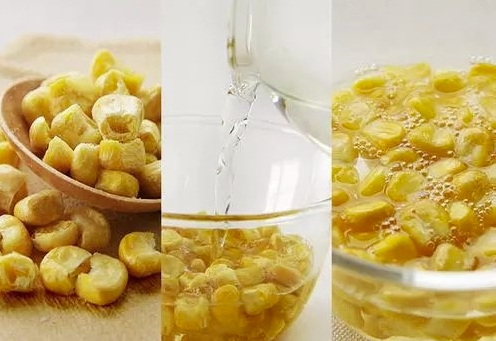
4. Durable preservation, easy to use
Freeze dried food is thoroughly dehydrated. Generally speaking, the residual moisture in freeze-dried food is less than 5%, and the residual moisture inside the food is evenly distributed. Therefore, under vacuum packaging conditions, it can be stored at room temperature for 3-5 years.
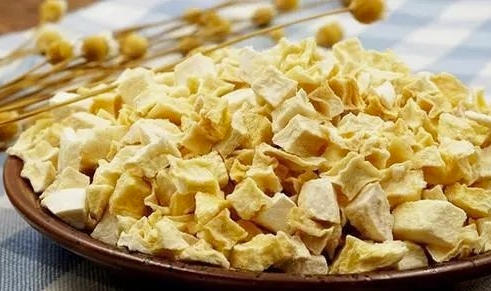
Of course, with the development of freeze-drying technology, its cost will also decrease. In addition, freeze-dried food conforms to the three major global food development trends of "green food", "convenience food", and "health food", and it will be a new trend in the future food industry.

